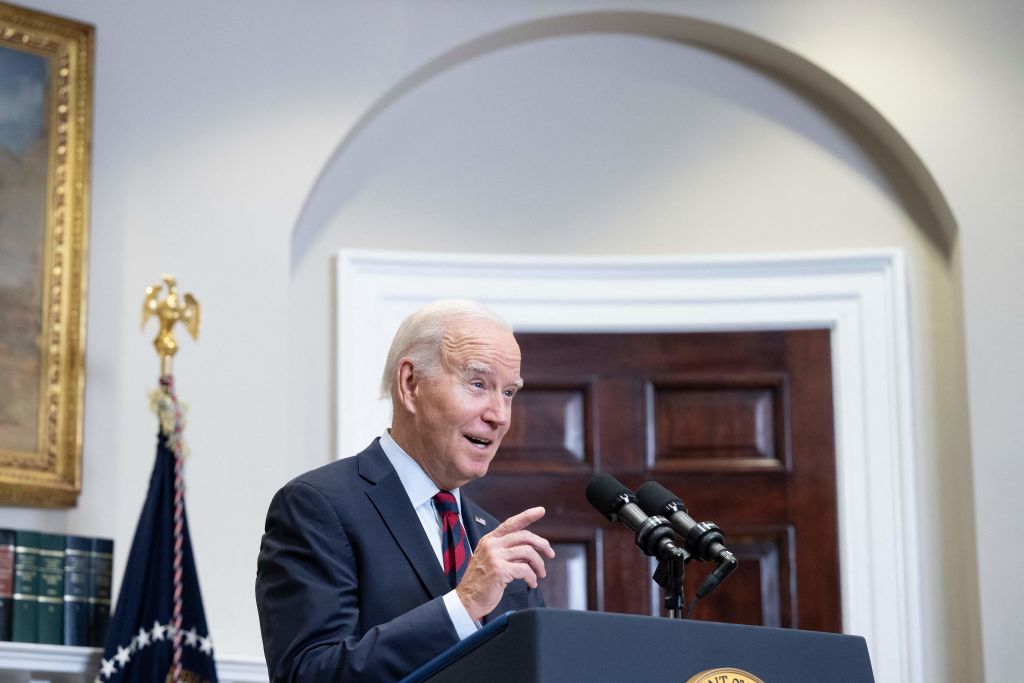
The Department of Education has released more details about its latest student loan forgiveness plan, according to a Monday press release.
New proposed text shows that the forgiveness plan is similarly as ambitious as previous iterations, possibly forgiving up to $20,000 for borrowers on an income-driven repayment plan that owe more than what they originally borrowed.
The Biden Administration is pursuing relief under the Higher Education Act (HEA) in a move that will help borrowers who fit criteria outlined in five specific categories
“The Biden-Harris Administration has already secured a total of $127 billion in debt relief for 3.6 million borrowers through a variety of actions, but we know there are so many hardworking Americans and families out there who still need help,” said U.S. Secretary of Education Miguel Cardona in a statement on Monday. “Student loans are supposed to be a bridge to a better life, not a life sentence of endless debt. This rulemaking process is about standing up for borrowers who’ve been failed by the country’s broken student loan system and creating new regulations that will reduce the burden of student debt in this country.”
More than 26 million borrowers who applied for up to $20,000 in student loan forgiveness were let down by the Supreme Court’s decision to strike down Biden’s debt forgiveness plan in late June, when the nine-member court ruled that the Administration did not have the authority to cancel debt under the Higher Education Relief Opportunities for Students (HEROES) Act of 2003. Instead, many Americans resumed their student loan payments in October.
Here’s what to know about the new plan the Biden Administration is proposing.
More From TIME
What would the proposed forgiveness entail?
Under the proposed changes, the Education Department is targeting borrowers who fall under five categories.
Those whose federal student loan balance exceed what they originally borrowed when entering repayment could see up to $10,000 forgiven. The rules would also allow for $20,000 in forgiveness for borrowers enrolled in the Saving on a Valuable Education (SAVE) plan for borrowers whose current balance is greater than their principal balance. Borrowers whose income is equal or less than 225 percent of the federal poverty guideline could also see $20,000 in forgiveness.
The current proposed rules add that eligible borrowers would have to make less than $125,000 a year if they are single, or $250,000 if they are married and file taxes with their spouse.
Borrowers who started paying off their loans 25 or more years ago, took out loans for programs that gave them “unreasonable” levels of debt, attended schools with “unacceptably high student loan default rates,” or who are eligible for certain repayment plans but have not applied for those programs would also receive some sort of financial aid.
An Education Department spokesperson previously told TIME that the exact amount of relief borrowers would receive “would vary depending on the balances being discharged and the reason.” They added they would try to automate the relief so borrowers wouldn't have to apply.
The Department of Education noted that it is also looking to address the needs of borrowers who are facing “financial hardship that the current student loan system does not currently adequately address.”
The Department of Education first announced its intention to pursue broader debt relief for borrowers through the Higher Education Act in June. Part of that plan includes undergoing a rulemaking process that would introduce new regulatory text to make that possible.
Negotiators first gathered on Oct. 10 and 11 to discuss regulatory changes for programs authorized by the HEA, which gives the Secretary of Education the authority to make changes to student financial assistance programs during wars, military operations, or national emergencies. The Act specifically allows the secretary to “waive” debt, which the Department of Education says includes federal student loans.
During the October meeting, U.S. Under Secretary of Education James Kvaal said the Administration wanted to focus on “creating clearer regulations” in relation to the secretary of education’s right to waive student debt, since current regulations are unclear.
Biden has already wiped out $127 billion in loan forgiveness for more than 3 million borrowers through numerous efforts, according to the Department of Education. The Biden Administration previously rolled out a one-time account adjustment, which reviewed borrowers’ loan history to see if they were eligible for forgiveness, as well as $9 billion in additional relief for people who are totally or permanently disabled, enrolled in the public service loan forgiveness program, or income-based repayment plans.
What happens next?
The Department of Education will follow up on their proposed changes to the Higher Education Act in a meeting on Dec. 11 and 12. After this meeting, the Department will release official rules that will be open for public comment in 2024.
The proposed changes are not expected to be finalized until next year, and could also face legal challenges.
More Must-Reads from TIME
- Donald Trump Is TIME's 2024 Person of the Year
- Why We Chose Trump as Person of the Year
- Is Intermittent Fasting Good or Bad for You?
- The 100 Must-Read Books of 2024
- The 20 Best Christmas TV Episodes
- Column: If Optimism Feels Ridiculous Now, Try Hope
- The Future of Climate Action Is Trade Policy
- Merle Bombardieri Is Helping People Make the Baby Decision
Contact us at letters@time.com